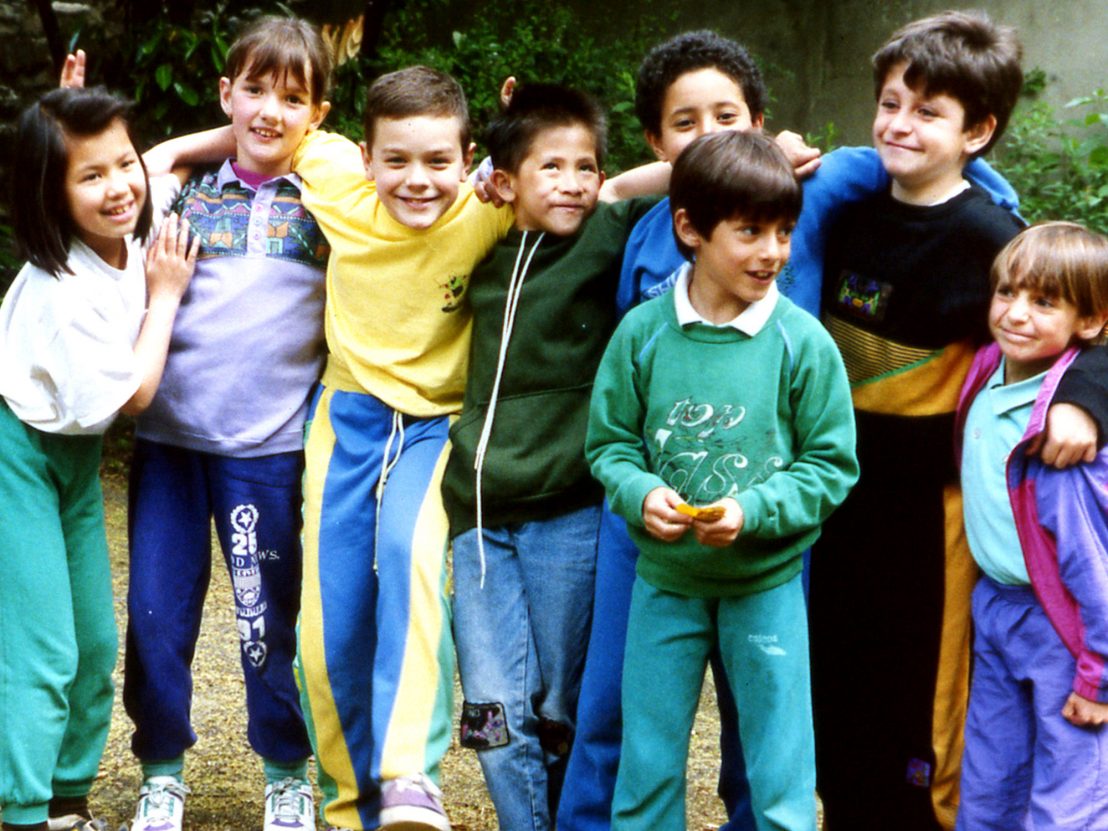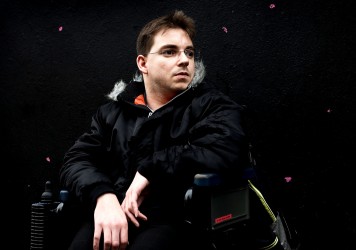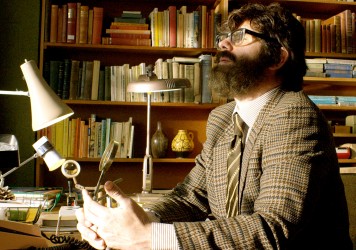
In the early 1990s, Nicolas Philibert was commissioned to make a training film for parents learning sign language. Yet the result, In the Land of the Deaf, could hardly be considered a training film. Far from being a didactic documentary, it instead teaches a tacit attentiveness. For Philibert, feelings are facts; this sensitive and curious film feels rather than tells.
Primarily centred in and around a school, the documentary follows the lives of D/deaf children, adolescents and adults. The protagonists navigate sign and oralism, make friends and fall in love, confess loneliness, frustration and joy. We are plunged into their ‘land’, a territory of liberating expression but also one increasingly alienated from the land of the hearing.
We encounter young people struggling through speech for the sake of their hearing families. The favour is rarely returned: parents never learn sign, speak too fast, forget to explain the joke. Philibert, who learnt to sign before shooting, does not castigate the hearing but simply exposes the arbitrary rules that divide the hearing and D/deaf; the roles the D/deaf must perform, the spaces they inhabit, and those they are forbidden to join.
The space closest to Philibert’s heart – what he hopes to (re)open – is cinema. Cinema (aka ‘motion pictures’ or simply ‘the movies’) is an emphatically visual medium. Philibert repeatedly makes self-aware references to cinema as ocular. In one scene the charming Florent looks into the camera in order to lipread what his mother is whispering in his ear.
The first sign monologue comes from a man, Levent Beskardes, who grew up enamoured by film “because it was very visual”. He yearned to be an actor and one day approached his neighbour, a film director, to ask if he could act in one of his films. The director thought him absurd: “It’s impossible, to be an actor you must be hearing”.
But why should his want be so unthinkable? It’s hard to imagine a contemporary box-office film without spoken dialogue, but we need only recall cinema’s birth as a silent medium wherein expressive gesturing was the principle narrative instrument. In the silent age the hearing and D/deaf shared the same space. The 1918 film A Dog’s Life saw Deaf actor Granville Redmond acting alongside Charlie Chaplin. The two were good friends; Redmond taught Chaplin ASL, and it is said that Chaplin’s Dance of the Oceana Rolls was inspired by Redmond.
Later in Philibert’s film we re-encounter Beskardes, now under a spotlight; he’s starring in a signed stage production. Beskardes’ purposeful gestures oscillate between poise and passion. He is both actor and dancer, fit for a role in Pina Bausch’s Tanztheater. Indeed, the German choreographer included elements of sign in her work, notably a signed rendition of Gershwin’s ‘The Man I Love’ performed by Lutz Förster (whose partner at the time taught sign language). Bausch was no doubt attracted to the eloquence and exactness of the gestures. (Upon further research I was pleased to learn that Beskardes has also worked successfully as a director and choreographer.)
Philibert’s cinematography is itself choreographic, rejecting filmic tools and techniques that fragment the body. He does not use facial close-ups when someone is communicating, as this would remove their hands from the frame. He doesn’t employ cutaways that would separate voice and action and impede lipreading, nor does he cast an external narrator to explain and claim authority. Philibert instead encourages us to engage with the film through close-looking, embodied intuition and sonic consciousness. Ambient background sounds are manipulated to make them more distant but not entirely absent. This allows him to further distort simplistic dichotomies that pit silence against noise, them against us, to empathically move between worlds and prompt a more accessible cinema culture.
Regarding accessibility, I recently came across LUX D/deaf Artists’ Film Commissions, a brilliant platform and programme that takes access and inclusion as the motivation for new works. Jenny Brady’s Receiver, Nina Thomas’ Silence and Louise Hickman and Shannon Finnegan’s Captioning on Captioning are some of the films selected. A bit more digging led me to an archived event page for an exhibition at Lux by Cinenova and Collective Text which addressed the ostracism of the D/deaf community that occurs, deliberately or unintentionally, in the production, distribution and exhibition of films (a film by Carolyn Lazard featured in the show can be viewed here).
Decades after In the Land of the Deaf was made, films and initiatives that shed light on the resilience and creativity of the D/deaf are regrettably still few and far between. The cinema is a space that has long been claimed by the land of the hearing, and it is about time that exclusivity is relinquished. When cinema’s do reopen, they should (re)open for all.
Published 14 Mar 2021

With disabled performers being pushed further into the background, three actors speak frankly about what’s really going on.

By Chloe Smith
Ben Lewin’s 2017 film allowed me to better understand my condition and myself.

An atmospheric, gently moving dramatisation of one man’s ocular impairment that doesn’t quite hit its mark.